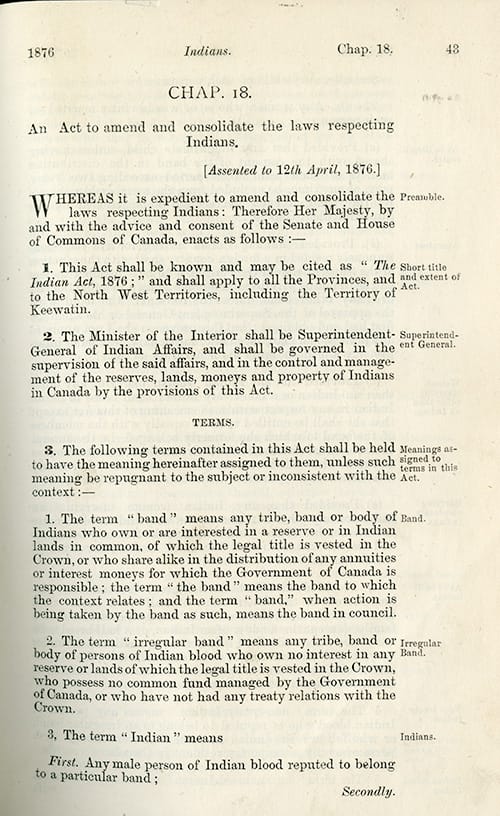As Ry Moran, Associate University Librarian - Reconciliation at the University of Victoria, host of the podcast series Taapwaywin, which explores the intersections between truth, memory, power, and human rights, states, "There is a long history of resistance by Survivors, their families, and even entire communities to the abusive residential school system. And starting in the 1900s, Survivors began turning to the courts as a way of pursuing justice for the abuse they experience, filing increasing numbers of civil and criminal suits against former residential school staff, the churches, and the federal government."
In this episode of Taapwaywin, entitled Burden of Proof, Moran speaks in conversation with David Paterson, a lawyer who has fought hard as an advocate for Survivors in the early stages of residential school litigation, and with Marion Buller, the Chief Commissioner for the National Inquiry into missing and murdered Indigenous women and girls, and now Chancellor of the University of Victoria.
This podcast discusses the difficulties experienced at the Truth and Reconciliation Commission to access records and other evidence, or as Buller describes the motivations against Residential School evidence and justice emerging, "Fear of the truth, fear of the truth coming out of people knowing, of the public knowing what actually happened. Because if people don't know, they can't hold you to account."
The Canadian Encyclopedia has created a short historical timeline of the Indian Act. Watch this short video to increase your awareness of the history of Residential Schools in Canada
 buildings. From crumbling structures to reclaimed spaces, these sites bear witness to a painful history of cultural genocide and resiliencee. Through evocative photography and poignant storytelling, the article invites readers to confront the past, reflect on the ongoing journey of reconciliation, and consider how these physical remnants shape collective memory and healing. Published in The Walrus, this piece is a powerful reminder of the importance of remembering and learning from history.
buildings. From crumbling structures to reclaimed spaces, these sites bear witness to a painful history of cultural genocide and resiliencee. Through evocative photography and poignant storytelling, the article invites readers to confront the past, reflect on the ongoing journey of reconciliation, and consider how these physical remnants shape collective memory and healing. Published in The Walrus, this piece is a powerful reminder of the importance of remembering and learning from history.Read the full article here: If these walls could talk
 ablished in the 1880s and remained operational until 1996. These institutions, often administered by Christian organizations, forcibly removed Indigenous children from their families under the guise of education. While forms of residential schooling existed prior to the Indian Act (1876), treaty negotiations had initially framed education as a means for Indigenous youth to acquire skills for adapting to settler society (Miller, 2024). However, following the enactment of the Indian Act, the objectives of Indigenous education shifted from skill acquisition to forced assimilation into Euro-Canadian culture. To enforce this assimilation, Indigenous children were separated from their families, sent to distant schools, assigned Euro-Canadian names, and prohibited from speaking their languages (Sorensen & Dyk, 2022).
ablished in the 1880s and remained operational until 1996. These institutions, often administered by Christian organizations, forcibly removed Indigenous children from their families under the guise of education. While forms of residential schooling existed prior to the Indian Act (1876), treaty negotiations had initially framed education as a means for Indigenous youth to acquire skills for adapting to settler society (Miller, 2024). However, following the enactment of the Indian Act, the objectives of Indigenous education shifted from skill acquisition to forced assimilation into Euro-Canadian culture. To enforce this assimilation, Indigenous children were separated from their families, sent to distant schools, assigned Euro-Canadian names, and prohibited from speaking their languages (Sorensen & Dyk, 2022).
References:
Miller, J. R. (2024). Residential Schools in Canada. In The Canadian Encyclopedia.
https://www.thecanadianencyclopedia.ca/en/article/residential-schools
National Centre for Truth and Reconciliation. (2025). Residential School Timeline.
https://nctr.ca/exhibits/residential-school-timeline/
Slezic, L. (2015, August 17). If These Walls Could Talk. The Walrus, September 2015.
https://thewalrus.ca/if-these-walls-could-talk/
Sorensen, A., & van Dyk, S. (2022). Indigenous perspectives on business ethics and business law in British
Columbia. BCcampus. https://opentextbc.ca/indigenousperspectivesbusiness/
One of the strategies used by Residential School denialists, in a form of epistemic injustice, claim that there is no hard evidence. This short CBC video holds victim and witness testimony of experiences in Residential Schools.
